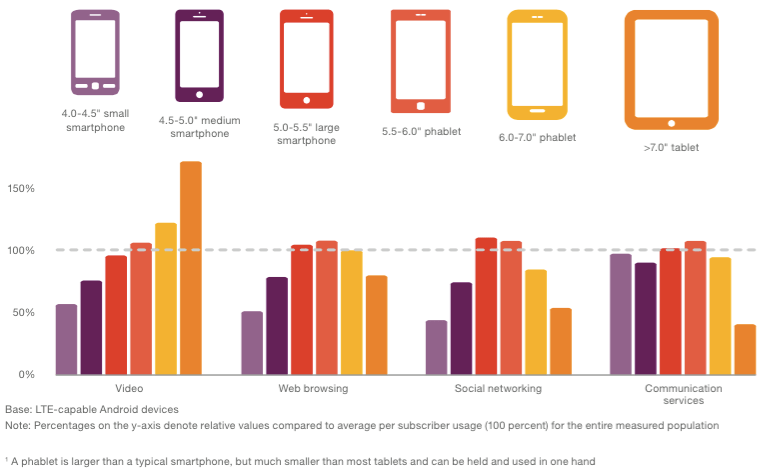- Enormous number of smart phones and smart devices being used, with many more on the way.
- Video counts for more and more of the traffic
- Big screens matter a lot (We have the biggest.)
- Special events drive a lot of traffic
MicroVision's technology is in the right place at the right time. The demand for what MVIS offers is staggering, and people don't know they can get it yet. As investors, we're absolutely at the right place at the right time.
There are more and more devices being dreamed up on a daily basis that can incorporate PicoP.
Mobile consumers consume mostly video -- which is where MicroVision's technology really shines.
Big screens allow people to SHARE the video experience -- so the fact that special events drive a lot of traffic --- that's fantastic --- people like to watch the big game together, even more than they like to share the Big Bang Theory. You can't share it on a phone, only with difficulty with a pad, but with PicoP -- it's easy.
"Today there are 2.6 billion smartphone subscriptions globally, and while growth has been levelling off in developed markets like the U.S. and Europe, it’s not stalling altogether by a long shot. By 2020, globally there will be 6.1 smartphone users led by huge growth in less mature markets. And with 6.1 billion smartphones in circulation, we will see a tipping point of sorts: smartphones will finally overtake the number of active fixed line subscriptions worldwide in 2020."
"The numbers come from the latest annual Mobility Report from Ericsson, which is being published today. Using data gathered from around 100 carriers globally, Ericsson uses this to paint a picture of what is going on right now, as well as what to expect in the future, covering not just how many people are using mobile networks but also how they are using mobile."
"Those 6.1 billion smartphone users works out to some 70 percent of the world’s population using smartphones in five years’ time, a measure of just how central these devices are becoming to how we communicate with each other and do much more."
"In fact, “total mobile” subscriptions by 2020 will actually number 9.2 billion. When you take into account Internet-of-things and M2M services, mobile broadband and even some basic remaining feature phones, there will be 26 billion connected devices in five years’ time. (As some point out, however, this is actually a downward revision from Ericsson’s previous forecast of 50 billion connected devices.)"
"Video already accounts for 45 percent of app traffic, will rise to 60 percent. The story here is about OTT providers like YouTube and Netflix, which are the two most popular and therefore the biggest gobblers of bandwidth. This is a fact that is not going away: video consumption on mobile is currently growing at a rate of 55 percent annually, Ericsson says. It further notes that YouTube alone accounts for between 40-60 percent of all video traffic today. Interestingly, music streaming is in a firm second place, and although it is “gaining popularity” its unlikely to overtake video at any point. Part of the reason for this is because a lot of music consumption is offline. Social network only accounts for 15%."
Marquee events are driving huge amounts of usage. Ericsson notes that the 2014 football world championship was “one of the biggest social media events of 2014,” and that boom also played out on mobile with people using their smartphones to text, talk and post on social networks. In all the World Cup generated 26.7 TeraBytes (TB) of traffic, “the data equivalent of 48.5 million digital photos plus 4.5 million voice calls.”
Size matters. It’s long been known that the size of the screen impacts what and how much a person consumers. Specifically, video continues to be a magnet service for tablet users — no surprise, given the larger screen and overall better experience. What’s interesting is that this does not trickle down to other kinds of functions that are more interactive.


No comments:
Post a Comment